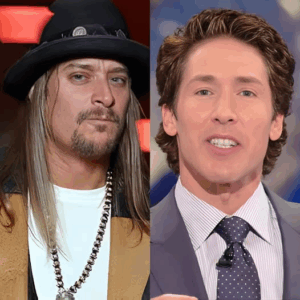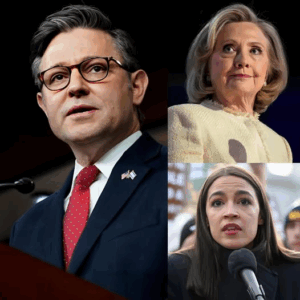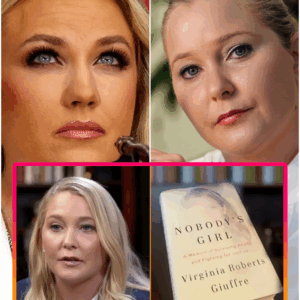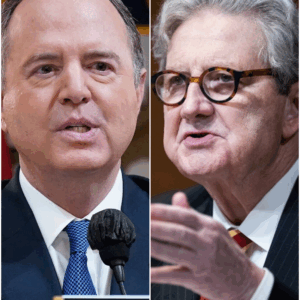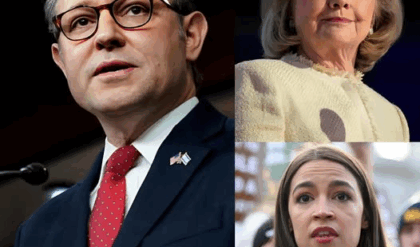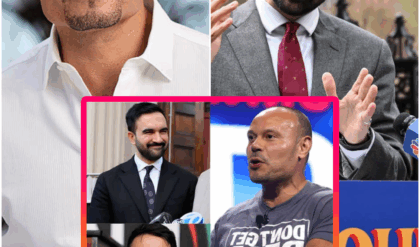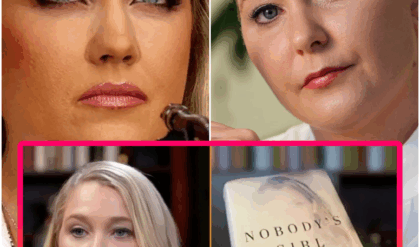Here’s the kind of night it was in Washington: a Tuesday built for autopilot suddenly snapped awake. At 4:12 p.m., Pam Bondi’s office sent a cryptic note—“An announcement is forthcoming”—and then refused to say another word. By evening, the former Florida attorney general, a figure who relishes a headline more than she fears one, revealed she was launching a broad investigation into “undisclosed political activities and irregularities involving multiple former officials.” The release was two paragraphs of fog. It didn’t name names. It didn’t have to. One line did the work: “Certain individuals previously assumed beyond the reach of renewed scrutiny are, in fact, relevant to the inquiry.” It doesn’t take a conspiracy theorist to connect that dot to Hillary Clinton.
You could feel the temperature drop across the city. Not because anyone had facts—there weren’t any, not yet—but because everyone recognized the shape of the thing. The orbit of Clinton scandals and quasi-scandals is a solar system with its own gravity. After years of relative quiet from her camp—speeches, philanthropy, cautious political cameos—here she was again, pulled back into the noise by an investigation nobody had penciled in. In 2025, nothing surprises, and yet this did.

Let’s be practical. Bondi is not a newcomer to the partisan theater. She’s run at the front of high-profile cases, traded oxygen with big political figures, and learned how to time a press release so it lands like a gavel. Even among her allies, the question surfaced immediately: why now? Her office claims “months of document reviews, new testimony, and whistleblower outreach” led here. Someone inside whispers about “a new set of communications” that changed the calculus earlier this year. It’s the familiar choreography—strong hints, careful vagueness, maximum suspense. If you’ve watched this dance before, you know the opening step is always the same: announce broad, narrow later, let everyone else write the script in the meantime.
Clintonworld, caught off guard, did what Clintonworld always does: issued a confidence-forward statement while working the phones like a newsroom on election night. Publicly, her spokesperson said she had “no knowledge of any matter” that would warrant an inquiry and predicted the whole thing would turn up nothing new. Privately, aides braced. Not because they feared a smoking gun—none has been described—but because the modern media environment doesn’t wait on facts. Optics drive. Headlines hang. Context arrives late, out of breath.
If you want to know what actually exists at this early stage, it’s a short list. Bondi has announced a probe. She hasn’t named specific targets. She hasn’t described the underlying conduct. She hasn’t laid out jurisdiction or coordination—state lane, federal referral, joint task force, none of it. She claims whistleblowers contributed, but we don’t know who, or what, or how credible. That’s not me being cynical; that’s just what’s on the page. The rest is projection wearing certainty’s jacket.
Predictably, the reactions sorted into their pre-written categories. Conservatives said: finally, sunlight. Progressives said: here we go again—political theater sold as oversight. Moderates, when they could get a word in, asked for evidence first, conclusions later. The media did what it does best in the absence of specifics—assembled timelines, dug through old clips, booked the usual suspects, and filled the air with sound. By dawn, every major outlet had a headline with the same architecture: something reopened, someone pushed back, questions lingered. That’s not bias; it’s muscle memory.
Here’s the part people don’t like to say out loud: investigations are narrative engines as much as they are legal processes. A good prosecutor knows that. A savvy political operator knows it even better. Announce an inquiry and—boom—you set the table, frame the stakes, define who must answer and who gets to question. The public reads the launch itself as smoke. Sometimes that’s fair. Often, it’s just how the machine works. Most investigations begin wide and dull. They only get sharp later—if ever.
Clinton as a symbol complicates everything. For three decades she’s been the Rorschach test of American political identity: to some, a blueprint for resilience; to others, a case study in entitlement; to most, a mirror for their priors. Pull her into a story and the country divides into memory palaces, each stocked with its own facts. Bondi knows that. So do the producers stacking segments and the operatives writing memos with verbs like “capitalize” and “neutralize.”

Let’s drill into the practical questions—the ones that will actually tell us whether this is combustible or just noisy. First: what triggered this? If it’s truly “new communications,” do we see contemporaneous metadata, chain of custody, corroboration? Second: whose lane is this? State-level authorities can do a lot, but certain matters—classification, federal records, foreign contacts—tend to live elsewhere. Third: is the scope forensic (documents, devices, audit trails) or testimonial (witnesses with stories)? Both can be meaningful; both can be performative if not grounded in something verifiable. Fourth: does anyone go on the record, under their own name, to say what this is really about? Background whispers move ratings; signed statements move cases.
So what does Clinton’s team do? The same thing any veteran shop does: lock down messaging, map out who might get subpoenaed, war-game the document universe, and get comfortable with repetition. The playbook is boring because it works—confidence, cooperation, and as little oxygen to the theater as possible. Bondi’s side will do the inverse: keep the suspense, slow-walk the details, and let opponents get overheated on cable while the legal work happens offstage. If you’re sensing a stalemate, that’s because this is how modern political lawfare functions: a tug-of-war over narrative before the law has its say.
I’ve covered enough of these cycles to know the difference between momentum and motion. Momentum is when filings appear, subpoenas land, witnesses flip, and dates get set on calendars that aren’t run by TV bookers. Motion is when quotes and counter-quotes pile up while the actual docket remains thin. Right now, we’ve got motion. That can change. If it does, you’ll feel it. The language will stiffen. People will stop doing the rounds. Lawyers will speak more and humans less. Paper will replace rumor.
Does any of this matter beyond the week’s spectacle? Yes, in one obvious way. It reminds us how the American political bloodstream remains susceptible to the same antigens—Clinton, investigations, whispers of wrongdoing—despite all the supposed progress and fatigue. It also underlines a less comfortable truth: our institutions have learned to work with that susceptibility. Announcements get timed. Ambiguity becomes a tool. The public is conditioned to chase a story that may never cohere, only to be told—months later—that the result is “inconclusive” or “no further action at this time.” Lather, rinse, repeat.
There’s a humane angle here that’s easy to miss while everyone is scorekeeping. These are people on both ends of the press release. Staffers who will now live on adrenaline. Families who will absorb the ambient stress. Sources who will get tested about what they knew and when. When I hear “whistleblower outreach,” I think of inboxes full of half-leads and true believers, and the hard work of separating signal from noise without turning the humans into props. Some offices do that well. Some don’t. We’ll see which kind Bondi is running.
If you’re reading this hoping for a verdict, you won’t get one. Not because I’m hedging, but because no verdict exists yet. The honest posture is disciplined skepticism: take the announcement seriously, but refuse to be drafted into someone else’s urgency. Ask for documents, dates, jurisdiction, and named sources. Notice what’s missing more than what’s implied. And understand that the first 48 hours of a political investigation are always the most distorting. They reward the loudest voice, not the clearest evidence.
In two weeks, Bondi promises more. Maybe she shows her work. Maybe she doesn’t. Maybe this turns into a real case with narrow claims and specific facts. Maybe it dissolves into the fog that birthed it, leaving behind only the faint impression of something consequential. The country will survive either way. The question is whether our attention will be any wiser for having been borrowed.
For now, file this under “plausible but unproven,” which is the least satisfying category in American public life and the one we visit most. If it blooms, you won’t need me to tell you; court records and sworn testimony speak plainly. If it fizzles, you’ll recognize the ending: a politician says they have nothing to add, a prosecutor says the review is complete, and everyone involved pretends they were never all-in on the drip-drip suspense. Until then, keep your footing. Curiosity is healthy. Certainty, this early, is a luxury nobody’s earned.
News
The auditorium glitched into silence the moment Joel Osteen leaned toward the mic and delivered a line no pastor is supposed to say in public. Even the stage lights seemed to hesitate as his voice echoed out: “God will NEVER forgive you.” People froze mid-applause. Kid Rock’s head snapped up. And in that weird, suspended moment, the crowd realized something had just detonated off-script.
The crowd expected an inspiring evening of testimony, music, and conversation. What they got instead was one of the most explosive on-stage confrontations ever witnessed inside a church auditorium. It happened fast—36 seconds, to be exact.But those 36 seconds would…
The room stalled mid-breath the moment Mike Johnson snapped open a black folder that wasn’t on any official docket. Cameras zoomed. Staffers froze. The label on the cover — CLINTON: THE SERVER SAGA — hit like a siren. Johnson leaned toward the mic, voice sharpened enough to scratch glass, and read a line that made every timeline jolt: “Her email is criminal.”
Here’s the thing about made-for-TV government: it knows exactly when to hold a beat. Tuesday’s oversight hearing had the rhythm down cold—routine questioning, polite skirmishes, staffers passing notes like we’re all pretending this is not a stage. And then Mike…
🔥 “THE FLOOR SHOOK BEFORE ANYONE COULD SPEAK.” — Investigator Dane Bonaro didn’t walk into the chamber — he tore through it, slamming a blood-red binder onto the desk with a force that made the microphones hiss. The label on the cover froze the room mid-breath: “1.4 MILLION SHADOW BALLOTS.” He locked eyes with the council and snarled, “You want the truth? Start with this.” For one suspended second, every camera operator lifted their lens like they’d just smelled a political explosion.
Here’s a scene you’ve watched a hundred times if you’ve spent enough hours in hearing rooms and greenrooms: a witness with a flair for performance, a committee hungry for a moment, and a gallery of reporters quietly betting which line…
🔥 “THE SMILE FLICKERED—AND THE ENTIRE STUDIO FELT IT.” — Laura Jarrett walked onto the Saturday TODAY set with the kind of calm, polished glow producers dream of. Cameras glided, lights warmed, and the energy felt like a coronation. But right as she settled between Peter Alexander and Joe Fryer, something shifted — a tiny hesitation in her smile, the kind that makes everyone watching sit up a little straighter. And then it came: a voice from outside the studio, sharp enough to snap the broadcast in half. For a full second, no one moved.
Here’s the thing about TV milestones: they’re designed for easy applause. A new co-anchor takes the desk, the chyron beams, the studio lights do their soft-shoe, and everyone is on their best behavior. It’s a ritual as old as morning-show…
🔥 “THE ROOM STOPPED LIKE SOMEONE CUT THE OXYGEN.” — What’s racing across timelines right now isn’t framed as a speech, or an interview, or even a moment. It’s being told like a rupture — the instant Erika Kirk, normally armored in composure, let a single tear fall while standing beside Elon Musk. Witnesses in these viral retellings swear the tear didn’t look emotional… it looked inevitable, like something finally broke through her defenses. And when Musk turned toward her, the entire audience leaned in as if they already knew the world was about to shift.
It was billed as a calm forum on human rights—an hour for big ideas like freedom, transparency, and the obligations that come with having a public voice. The stage was washed in soft gold, the kind of lighting that flatters…
🔥 “THE ROOM WENT DEAD IN UNDER A SECOND.” — What unfolded inside the Senate chamber didn’t look like a hearing anymore — it looked like a trap snapping shut. Adam Schiff sat back with that confident half-smile, clutching a 2021 DOJ memo like it was the final move in a game he thought he’d already won. Staffers say he timed his line perfectly — “Your rhetoric ignores the facts, Senator. Time to face reality.” But instead of rattling Kennedy, something in the senator’s expression made even reporters lean forward, sensing the shift before anyone spoke again.
It didn’t look like much at first—another oversight hearing, another afternoon in a Senate chamber where the oxygen gets thinned out by procedure. Then Adam Schiff leaned into a microphone with a lawyer’s confidence, and John Neely Kennedy pulled out…
End of content
No more pages to load
